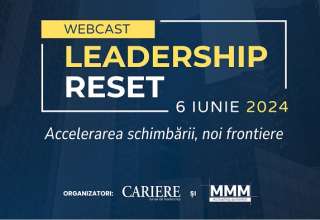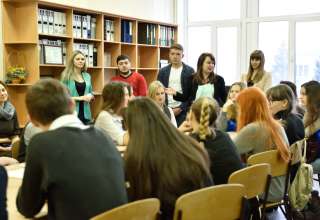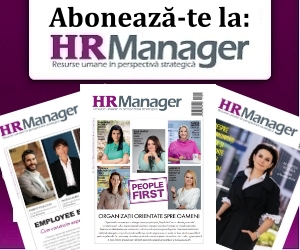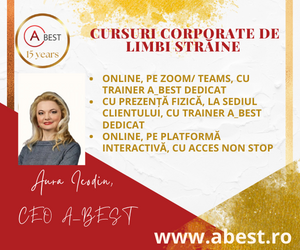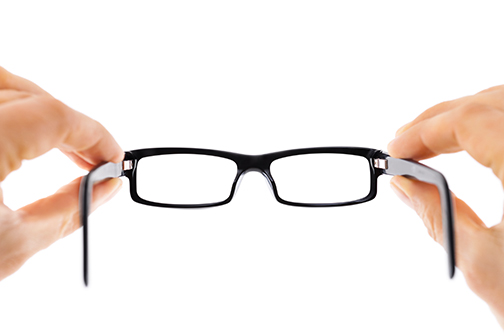
by Roxana Maxim
One of the topics that will be addressed at the 3rd Annual HR Excellence Summit in Barcelona will be „Global HR”. You can’t say it’s not a hot topic to talk about! Just think about all the economical changes going on, about the mixtures of cross-cultural projects within organizations. Things are huge and might seem frightening for HRs that now have to plan and implement things globally. Luckily, we have people to inspire us. And one of them is Xavier Molinié, former executive director-EMEA for Dell and speaker at the Barcelona conference. He accepted to talk with us about his vision.
Q:What is happening to the HR’s role/function in the organization? How is it transforming itself?
A: What is on the way in terms of HR transformation is not a revolution! It’s coming from the fact that there are more and more big global companies that operate multi-channel in hundreds of countries and take advantage from the evolution of the technology to fasten and ease data management. There have always been 4 major roles within HR: (1) Administration & Payroll, (2) Employee and Labor Relations, (3) Business Consulting and (4) Centers of Expertise (C&B, Talent Acquisition, Talent Management, International Mobility). Most of the time, in small and medium businesses, the first 3 are driven by one team through a unique reporting line. For big companies, in order to get closer to the businesses and to reduce the shared costs, time has come to re-think how HR is organized and how it delivers against the various strategic plans of the different businesses within the same company.
Then, questions pop-up on what can be standardized, globalized and offshored – how to proceed to attract the best talented experts and build up virtual teams across the regions; how to progressively transform HR Generalists into Employee and Labor Relations Experts; how to build the Consulting talent group. And regarding remote working, well, this is a tool abolishing the frontiers and facilitating this transformation by offering a wider pool of skills without any country/location dependency.
Q: How can HR professionals adapt to this new job pattern? Are there any new abilities involved?
A: The new pattern is collaborative vs. hierarchical; the job scopes are in majority regional and global, instead of being country based and local; the required skill set is now based on expertise; the career path is enriched with much more lateral move opportunities; the decision making process is more complex and the key ability to acquire is then program and change management.
 Q: When we say „globalizing of HR”, what should we visualize?
Q: When we say „globalizing of HR”, what should we visualize?
A: That’s a very smart question. I imagine that most of the people translate „globalizing HR” into offshoring and creating shared services hubs in locations where the cost of work is attractive. In fact this is only a consequence of globalization. Globalizing HR is pushing the HR organization out of a role of support and become HR as a Service. The point is that today’s companies are going through rollercoaster changes, ups and downs, acquisitions, redundancy plans, managed services, etc.; on another hand, technology and innovation influence the strategies and also offer new opportunities for cost savings… and the battlefield is global. Within this environment it is hard to keep on stating that the HR headcount benchmark is 1.2-1.5% of the total headcount of a company. Nowadays, the question is much more about „what is the cost for HR that a company can afford, for it to remain competitive and absorb changes?” and „what is the HR delivery commitment?”.
Q: What are the key drivers for globalizing the HR?
A: ROI, Expertise and Compliance.
Q: Among these drivers, which are the most trickiest? How do we handle them?
A: The trickiest one is Compliance. When going through HR globalization, I think it is relevant to keep in mind the trivial round of HR professionals who take care of the local requirements, driven by the in-country legislation and regulation of those countries. Let’s take the EMEA region as an extreme example: it is made of 123 countries of which 27 are within EU, it has 25 different business languages, 85 different currencies and 120 different legal systems. It has a population of 2.4 billion, out of which less than 5% are native English speakers. Starting from the daily paper work and up to labor relations, it is obvious that we need to raise the bar at the most appropriate level when questioning what can be owned and managed out of the countries. The point here is to avoid legal and employment breaches, and duplicated and bureaucratic controls that would bring additional costs and slow down the machine.
Expertise management has also a tricky face. When the roles, the responsibilities, the duties are clearly designed and segmented; when you set up very precise flow charts stating who does what from here to there, and who takes over next, you take two risks: one – a loss of accountability across the board; two – a decrease of motivation and creativity when roles narrow to key expertise only.
Q: The economical uncertainty, the dynamic of today’s business, the new models…all of them involve fast decision making, flexibility and being sharp enough to be one step ahead of change. How does this cope with these big bureaucratic, procedure based business machines a.k.a companies? How can we globalize successfully?
A: Setting up, as I did when in Dell, a relevant Program Management structure and a team to drive pan-EMEA mergers and acquisitions is instrumental to implement fast and well. The TUPE regulation in EU (Transfer of Undertakings – Protection of Employment n.r.) makes things much more complex than in US or Asia. And by the way, managing complex issues like M&A from a regional/global perspective enables you to have a unique agenda and to address all the similarities and the common issues as one, rather than duplicate your approach. We do not have yet a unique and global legislation, it’s true and and we have to deal with that. The value of HR is then to be able to implement programs within the shortest time frame and also to assess risks properly so that the business can take option to carry its costs in its business plan, when relevant.
Also, would it be provocative to add that bureaucracy is not always where we assume it is? An over centralized approach requiring an increased number of analytics and controls cannot fully unlock the potential of globalization because diversity (of cultures, of nationalities) and trust are the key layers of where globalization takes ground.
Q: How do you see leadership adapting to a global and mobile workforce? Are they ready for this?
A: All organizations have a virtual and mobile component. There is not one answer to this question because many parameters have to be considered and it’s not just about the leaders’ readiness. Are the remote employees ready too? One sure thing is that managing remote employees is much more time consuming than having them in the same building. It is obvious that it takes longer over phone and vidio chats to build proximity, trust and confidence with each individual reporting to you. Moreover, the requirements in terms of rigor are much higher for a remote manager: not missing calls, being on time… that means showing respect. Communication and sharing information is another key aspect – remote people have no opportunity to meet you unformally with a coffee, grab information and feel acknowledged. The small details of a physical proximity, which are instrumental to build an enduring and trustful relationship with someone, have to be balanced with an extremely strong discipline and creativity on a remote basis. Last, but not least, remote teams are often made of many nationalities and the vehicle language is English at different levels within the team. The professional use of a language with restricted empathy can be perceived as a very direct and straight forward management style.
Q: How do you imagine the future of the HR profession?
A: We should have 4 main HR categories: 1. Support HR (Technology, Shared Services Centers), enabling transactional management, enabling each employee to access fast and online a vast amount of HR information 2. Expert HR, local and global 3. HR Consultants and 4. HR Program Managers.
Q: What was your biggest challenge and how did you overcame it?
A: Every new day starts with a new flow of challenges and changes that have an increasing level of complexity due to the number of parameters that need to be taken into consideration. Maybe the biggest challenge was to open minds and work with my HR team members so they move out of a too narrow and local point of view to a wider perspective. I overcame it by developing my team members’skill set and geography, and by asking them to take risks. The HR organizations are often very conservative and reluctant to risk taking!
Q: What do you like most about what you do and why?
A: I like people, I like the richness and potential of each individuality in its complexity. What I like most is to invent ways to unleash potentials and give the opportunity to each employee to get much more than only a salary when coming at work.
This interview was published in HR Manager oct. issue, no. 35, 2014. If you want to keep in touch with HR Manager’s content, we invite you to become one of our subscribers. For details please email us at: roxana.adam@cariereonline.ro


